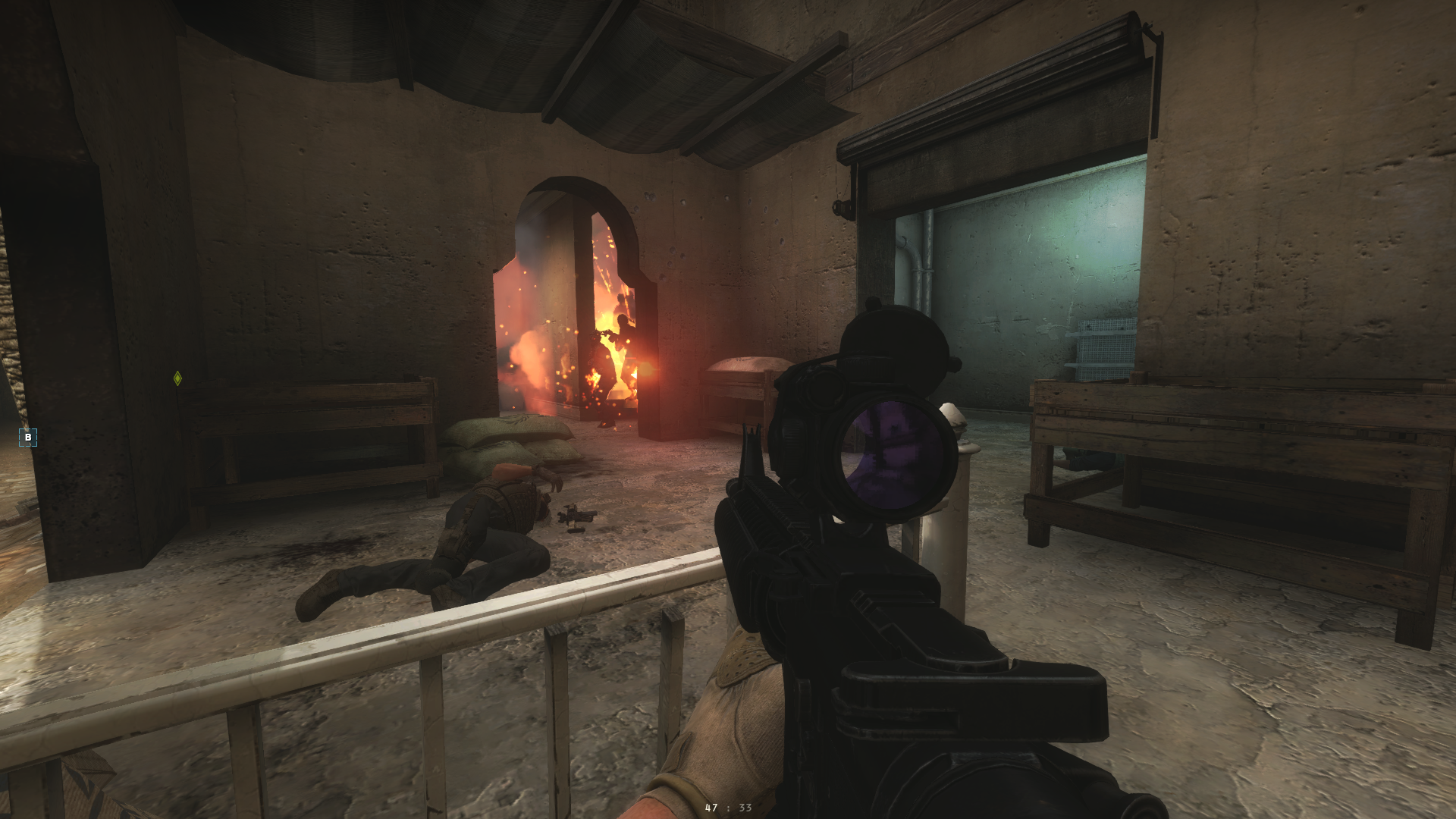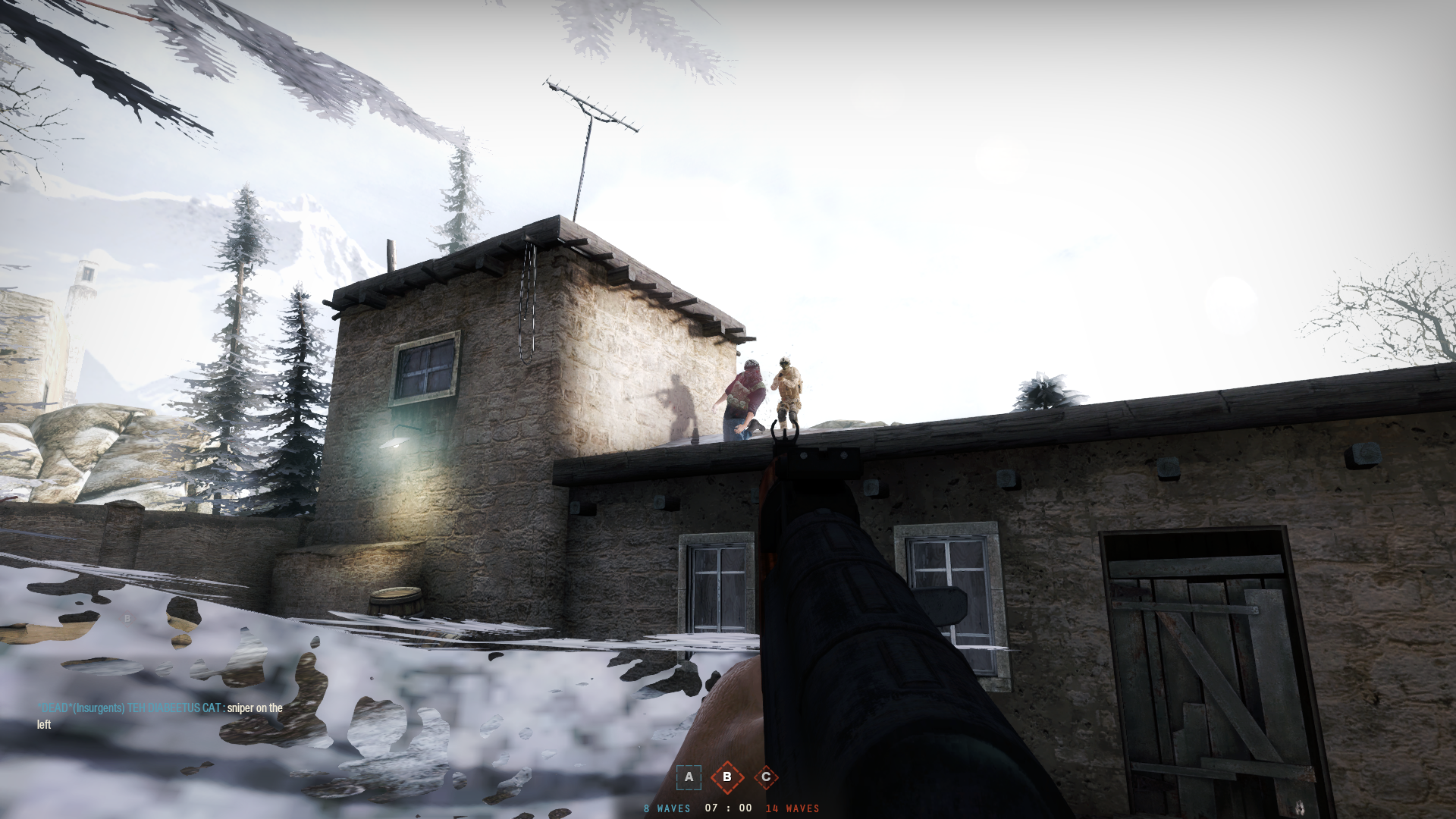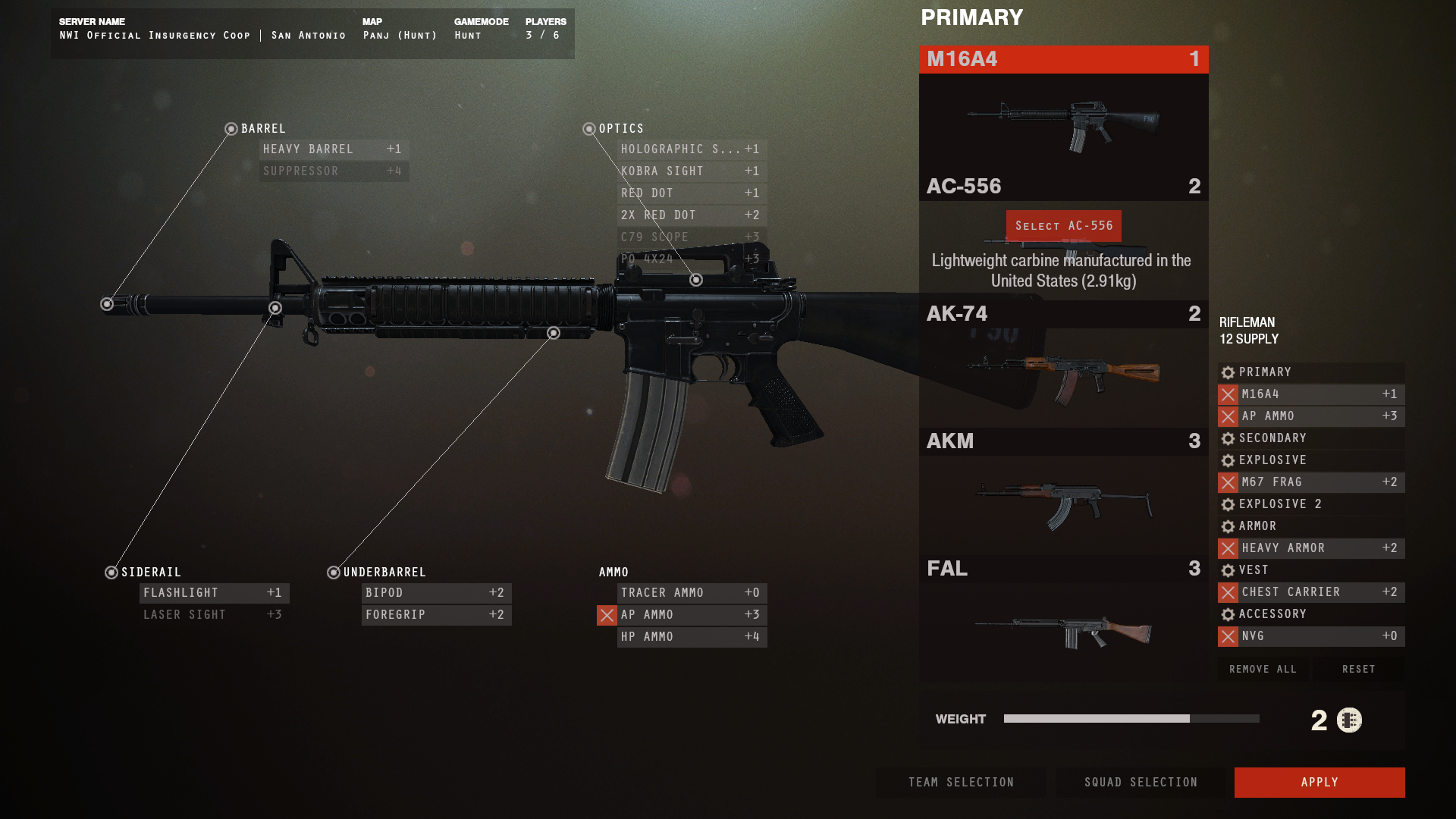Checking in on Insurgency, one year later

We write about FPSes each week in Triggernometry, a mixture of tips, design criticism, and a celebration of virtual marksmanship.
There came a moment this week when I looked up from my PC after hours of in-the-zone shooter gaming. It was two in the morning, I was still playing Insurgency, and I realized that I hadn’t taken a single screenshot in hours. The greatest compliment I can give Insurgency is that I was having so much fun shooting my way through wadis and Baghdad alleys that I kept forgetting to capture the screens I needed for this article.
Of all the multiplayer shooters available right now, I find Insurgency’s style to be uniquely satisfying. Though it is billed as a “tactical” shooter, I think of it more as a slower, more deliberate version of Counter-Strike. It gets a reputation for tactics because every little bit of info that players come to rely on in shooters is purposely removed. Gone are the mini-maps, the damage indicators. If I want to know where my friends are, I keep them in sight. If I want to know how many bullets I have, I count my shots. If I want to know if I killed someone, I walk over and look for a body.
Insurgency, basically, isn’t here to hold my hand.

Follow the leader
The feeling of fragility defines Insurgency. In another FPS, I might be alerted to an enemy by on-screen indicators. In Insurgency, I spot enemies when my friends start spraying blood. Sticking with a team is critical because they are your extra health points, taking bullets for you. Together, each squad becomes a Halo Spartan or a Call of Duty protagonist clad head-to-toe in plot armor.
Your team members carry a variety of weapons, too. Each loadout in Insurgency can be customized according to supply points earned over the course of a match. This makes for a satisfying power curve as each team makes kills, earns supply points, and upgrades to better guns and shinier attachments. Supply points used to be awarded by kills alone, something that, as I pointed out when I previewed the game in Early Access, incentivized stupid run-and-gun tactics and failed to reward support roles. I was very pleased to see that developer New Worlds tinkered with the economy a bit since launch. Now, each team earns supply points as a group. If you help your team kick a lot of ass, you’ll be able to upgrade your kit.

New Worlds has also spent a lot of the last year adding stuff to the game. Eight new maps, eight new weapons, and four new game modes have been introduced. They’ve grown and changed the plan for the game in response to community feedback. When I contacted creative director Andrew Spearin to talk about Insurgency’s first year, he gave me one example: respawns.
“We didn't know whether our unique reinforcement system would be fun until we played it with our community,” Spearin said. “Typically, suggestions would be for one-life or unlimited respawn game modes, but we designed a mechanic to spawn your team when an objective is captured. That actually proved to be immensely fun and a unique component that defined the tactical essence of Insurgency.”
Keep up to date with the most important stories and the best deals, as picked by the PC Gamer team.
Ignoring everything except your mission objective is something the military excels at, but that military-themed shooters mostly fail to simulate in the rules of the game.

Reinforcements
All of that careful community building, not to mention some key sales with Humble Bundle and a free Steam weekend, has led to a pretty healthy online community. As of this writing, there are twice as many people playing Insurgency as there are playing Evolve—not bad for an indie FPS well into its second year of release. Though the game does have a basic single-player practice mode (and one of the most aggressively difficult tutorials I’ve ever played), the bulk of Insurgency will always be online. It’s good that there are plenty of players to support it.
Insurgency players are also some of the most helpful I’ve encountered online. We noted in our review that the emphasis on teamwork makes incompetence a shared liability; as a result, experienced players are only too eager to bring rookies up to speed. In the 14 months since launch, that hasn’t changed.
Spearin seems to know that their efforts have paid off. Not only are there a lot of people playing the game, but they all seem to love it. “It's very positive and validating to know that we are introducing a unique experience to the shooter genre,” Spearin said. “Many fans have found a safe haven with Insurgency, [which] they feel is a better experience than the usual AAA franchises. Insurgency has over 25,000 Steam reviews with a 92% recommended rating. They aren't just lukewarm reviews, but often say it's the greatest or most intense FPS they have played.”

Insurgency also has one of the most seamless Steam integrations I’ve had the pleasure of playing. Finding a server is quick and easy, and bringing friends into a party and then finding a game as a group worked perfectly every time. Even the in-game voice chat automatically mutes other Steam voice calls, preventing your closest friends from getting an echo. In a genre where so many developers half-ass these basic necessities, let’s take a moment to pin a medal to Insurgency for getting it right.
Objective secure
On the FPS spectrum that, I think, goes from Arma 3 on one side to Call of Duty on the other, a running dichotomy between open-world freedom and cinematic scripts, Insurgency captures the middle ground. It is slower than Counter-Strike but faster than Red Orchestra 2. It rejects the self-seriousness of America’s Army 3 but doesn’t stray near the slapstick of Team Fortress 2. When I revisited Insurgency, I went looking for a niche curiosity, but I found my new go-to FPS.

